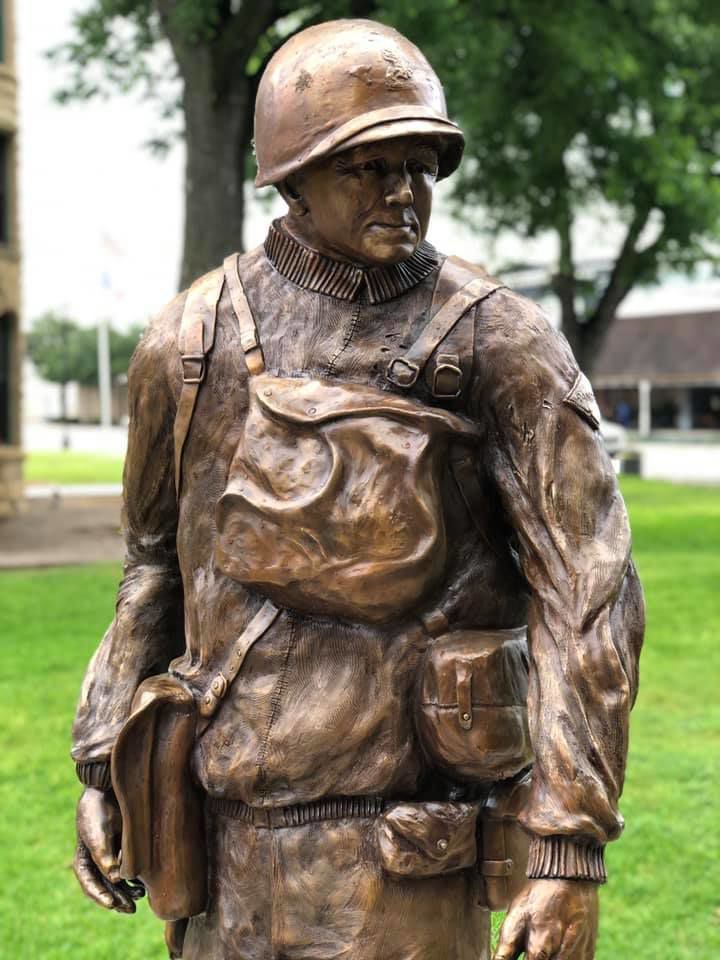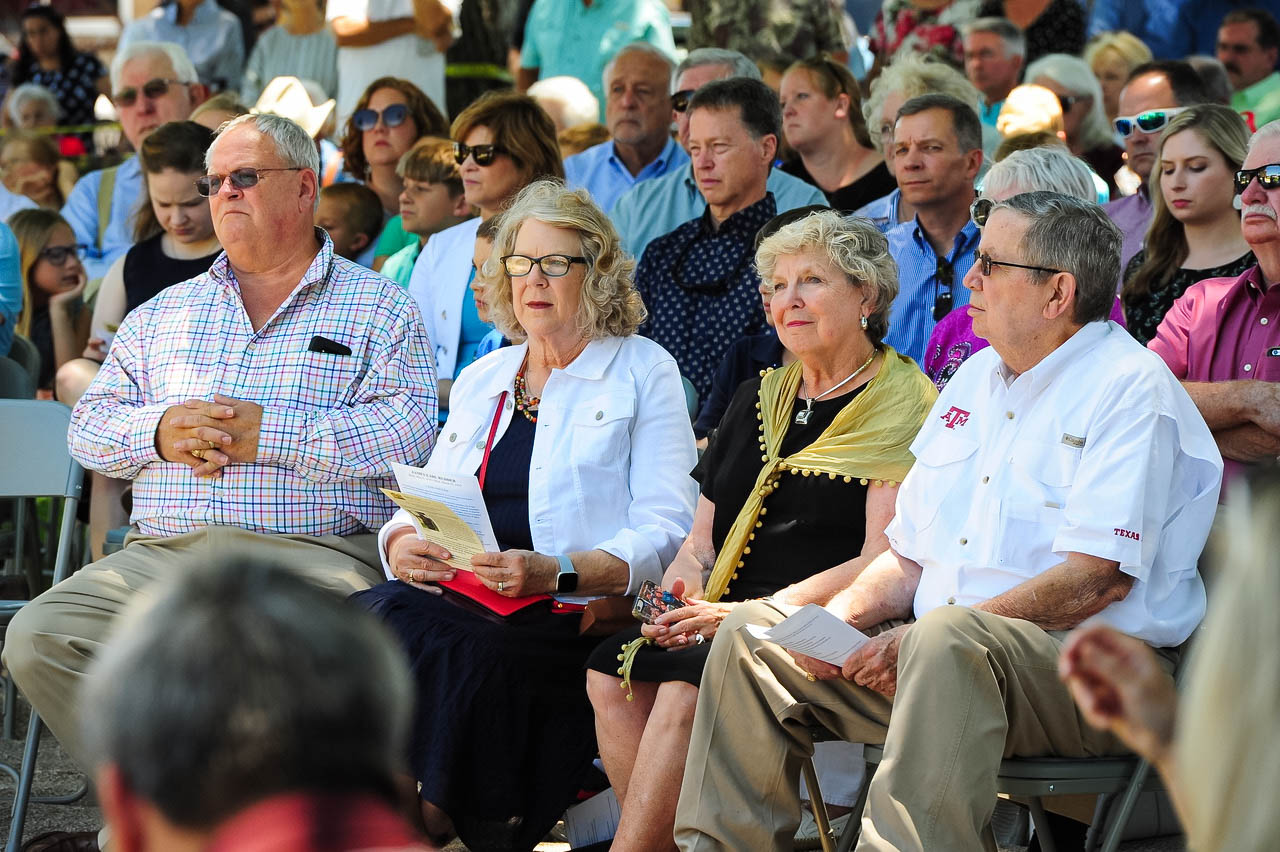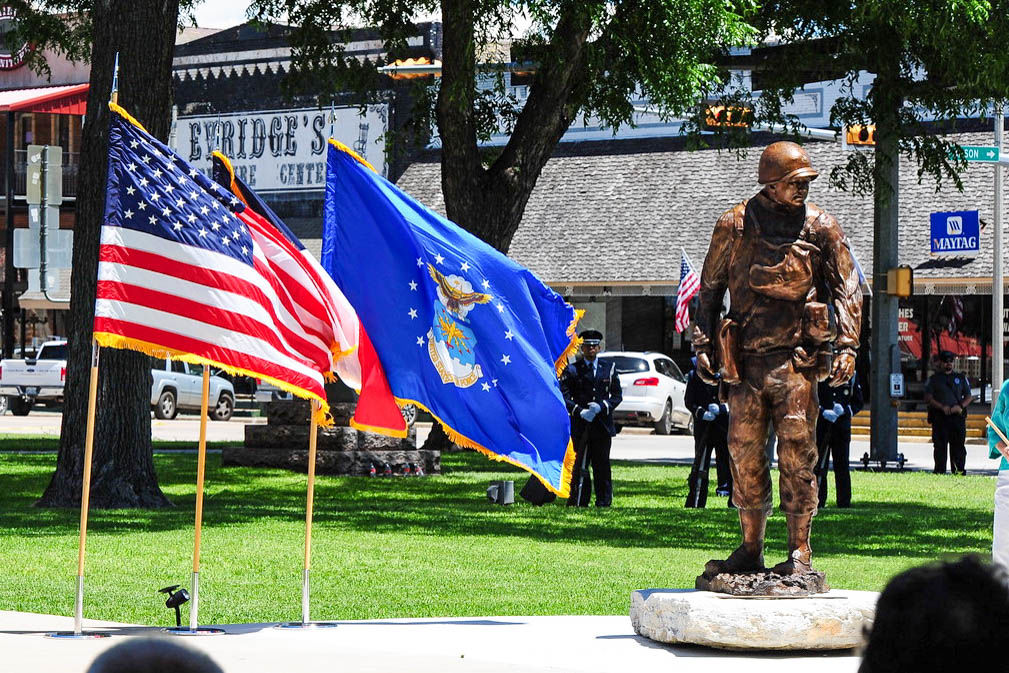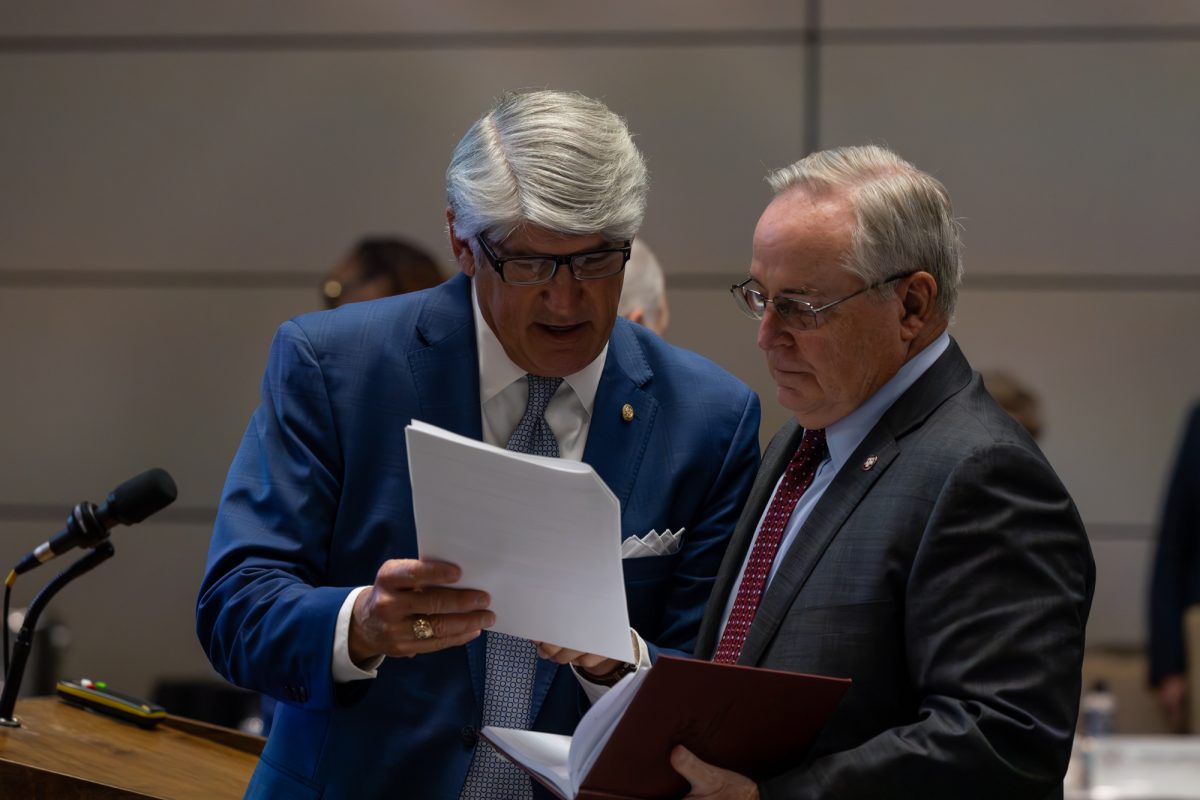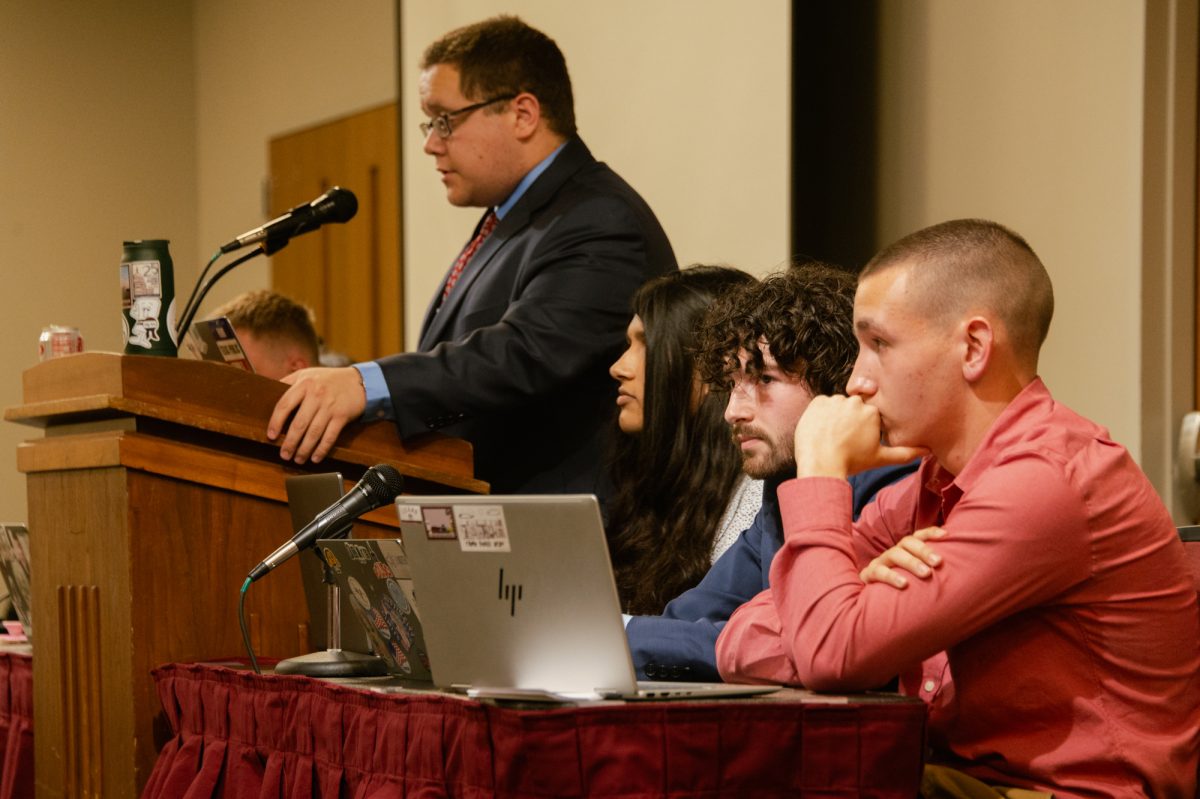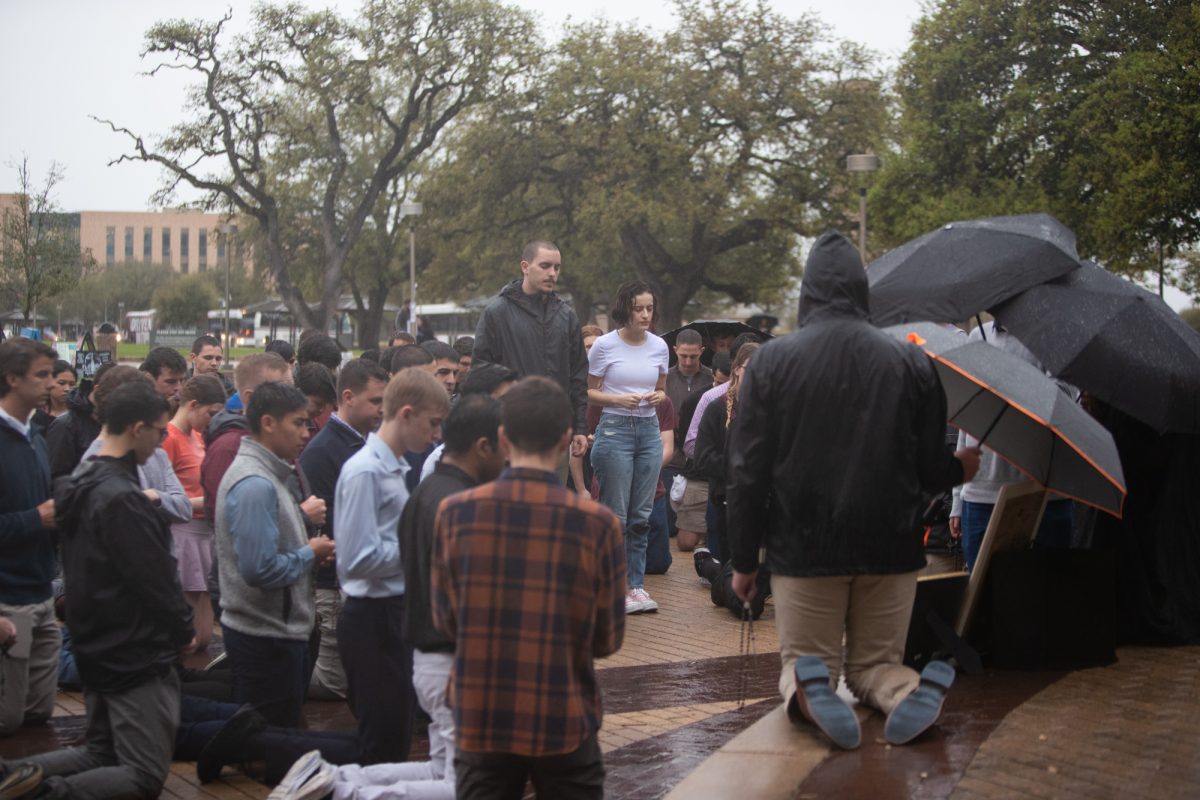James Earl Rudder is known at Texas A&M as a former president of the university, Class of 1932 and a staple in A&M’s overall history. On Thursday, June 6 Rudder became a permanent part of the town of Brady, Texas.
An eight-foot tall statue of Rudder in his World War II uniform was unveiled in its new home at the downtown Brady square.
Rudder began his career as a high school coach in Brady before eventually becoming the town’s mayor in 1945. He later went back to his alma mater and became the 16th president of A&M in 1959 and the third president of A&M Systems in 1965.
American historian and author of “Rudder: From Leader to Legend,” Thomas Hatfield spoke at the unveiling about Rudder’s relationship with the town of Brady.
“Earl Rudder loved Brady, Texas and Brady, Texas loved Earl Rudder. The proof of that is your presence here today,” Hatfield said. “Earl adopted Brady as his hometown in 1933. His remarkable career began here. Brady gave Earl, a poor boy from Eden, [Texas] a hand hold on the wall of life and he made the most of it.”
Hatfield wrapped up his remarks by reminding residents that Rudder would always be a part of the town and its history.
“To the end of his life, to his very last day, when he was asked to introduced himself he always said ‘I’m Earl Rudder from Brady, Texas,’” Hatfield said. “With the magnificent achievement by [the Kelley’s], Earl Rudder is back in Brady, Texas to stay.”
According to an article in the Brady Standard-Herald, the $80,000 project began years ago and is meant to be a tribute to Rudder’s influence on the town while he was its mayor. Rudder’s son, James Earl Rudder Jr. worked closely with the Heart of Texas Historical Museum to bring this statue to life, including offering his father’s uniform as reference.
Sculptor Troy Kelley created the statue of Rudder and said in a interview with KLST-TV that he was excited to be on the project and the process was “a labor of love.” According to the same news station, over 60 members of Rudder’s family attended the unveiling on Thursday.
Aside from the impact Rudder had on the town, the day of the statue’s unveiling was also important to his military career.
Thursday, June 6 marks the 75th anniversary of the D-Day invasion — the battle between military troops and Nazi’s on the beaches of Normandy, France during World War II. During his time as a U.S. Army Lieutenant Col., Rudder led the Pointe du Hoc battle, which played a major part in the D-Day invasion. The Army Rangers, led by Rudder, scaled the 100-foot cliff at Pointe du Hoc in Normandy to neutralize Germany guns.
On the 40th anniversary of D-Day in 1984, former president Ronald Reagan made a speech at the U.S. Ranger Monument on the northern coast of France where the Pointe du Hoc battle took place.
“These are the boys of Pointe du Hoc,” Reagan said. “These are the men who took the cliffs. These are the champions who helped free a continent. These are the heroes who helped end a war.”
In front of D-Day veterans and world leaders, Reagan continued his speech and said the 225 Rangers, made a major sacrifice for America that day.
“You all knew that some things are worth dying for. One’s country is worth dying for, and democracy is worth dying for, because it’s the most deeply honorable form of government ever devised by man,” Reagan said. “All of you loved liberty. All of you were willing to fight tyranny, and you knew the people of your countries were behind you.”




